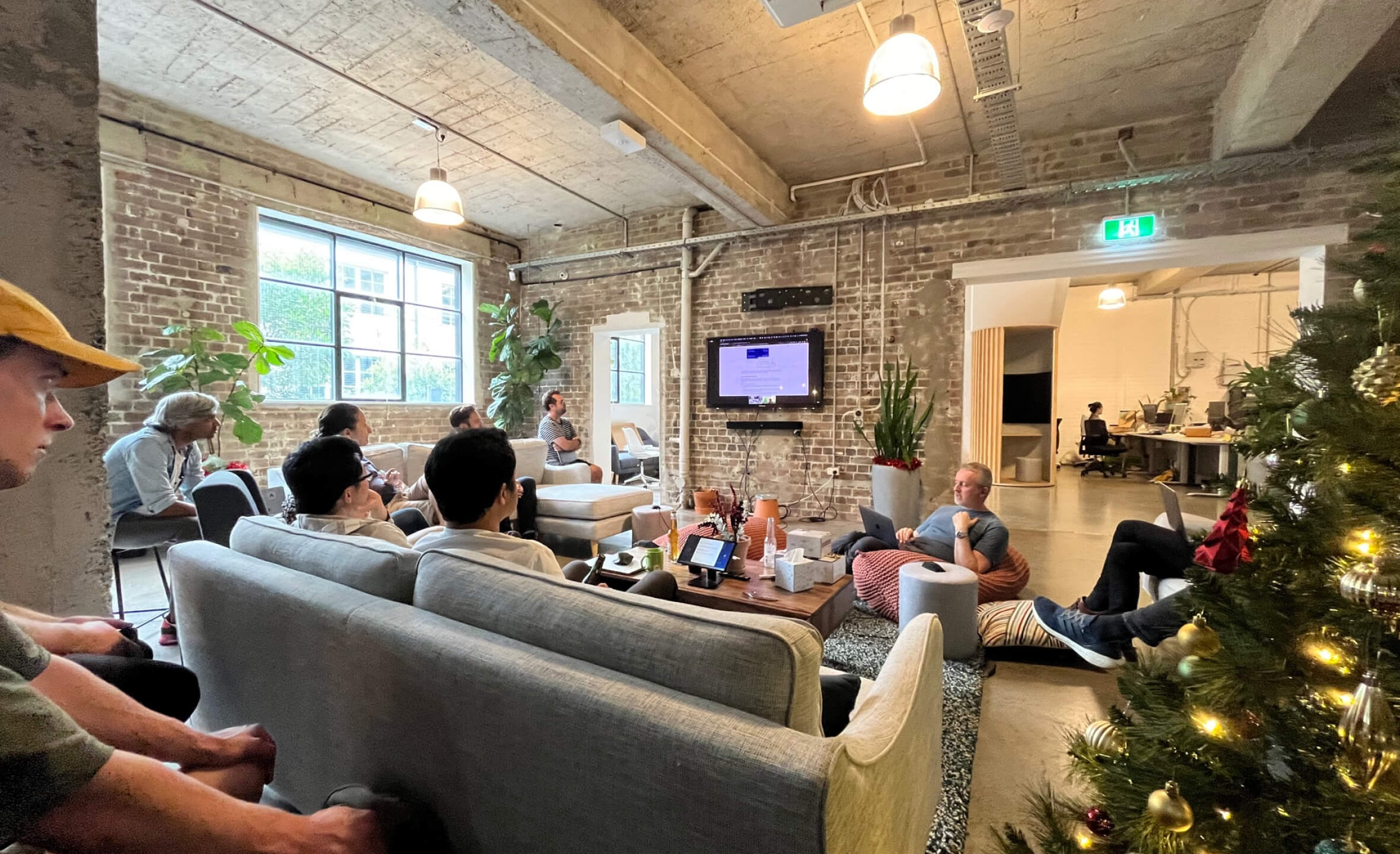Growing from 10 to 80
My role changed a lot during my 5 years at Qwilr. First to establish and grow design at Qwilr, then to manage the product teams, and finally into leadership as VP Design. From fine detail to broader brush strokes, working at each vantage point gave me a better perspective of the whole. Below are my highlights of that journey. What I learned and loved from a very meaningful chapter of my career.
Teams, practices & pathways

Me
Lead the new product team structures and designed their core workflows and early practices.

Dylan
CEO, responsible for keeping alignment with teams and Qwilr's vission, mission and strategy.

Ben
Engineering Manager, early partner in how team workflows could be more collaborative and fruitful.

Diana
Responsible for early team designs and leadership, especially how features were launched well.
Design was the smallest team, and for it to make a real impact, the broader product teams and workflows needed clearer ways of working. Over two years I helped redesign our product teams, their foundational practices, and how updates were shared with the wider company.
Visualising how work happened in the product
When I joined, Dylan (Qwilr’s CEO & cofounder) was communicating design ideas through a series of sketches and scrapbooks of screenshots. With only a “platform team” of 4 engineers, work was spread across Asana, gDocs, and in heads. Intractable to anyone outside the team. Before I could set new expectations about Design’s place in all this, we first needed to make this broader workflow clear, and visible to the company.
To reduce this sprawl, I moved the company to Notion, and designed new workflows, optimised for one of Qwilr’s core principles — “clarity through collaboration”. Creating a traceable line between roadmap, individual teams, projects and their tasks. From shared definitions of priorities, to how work progressed and why. This system scaled with us through the years to come, increased how effectively we could collaborate, and allowed me to visualise how Design worked.
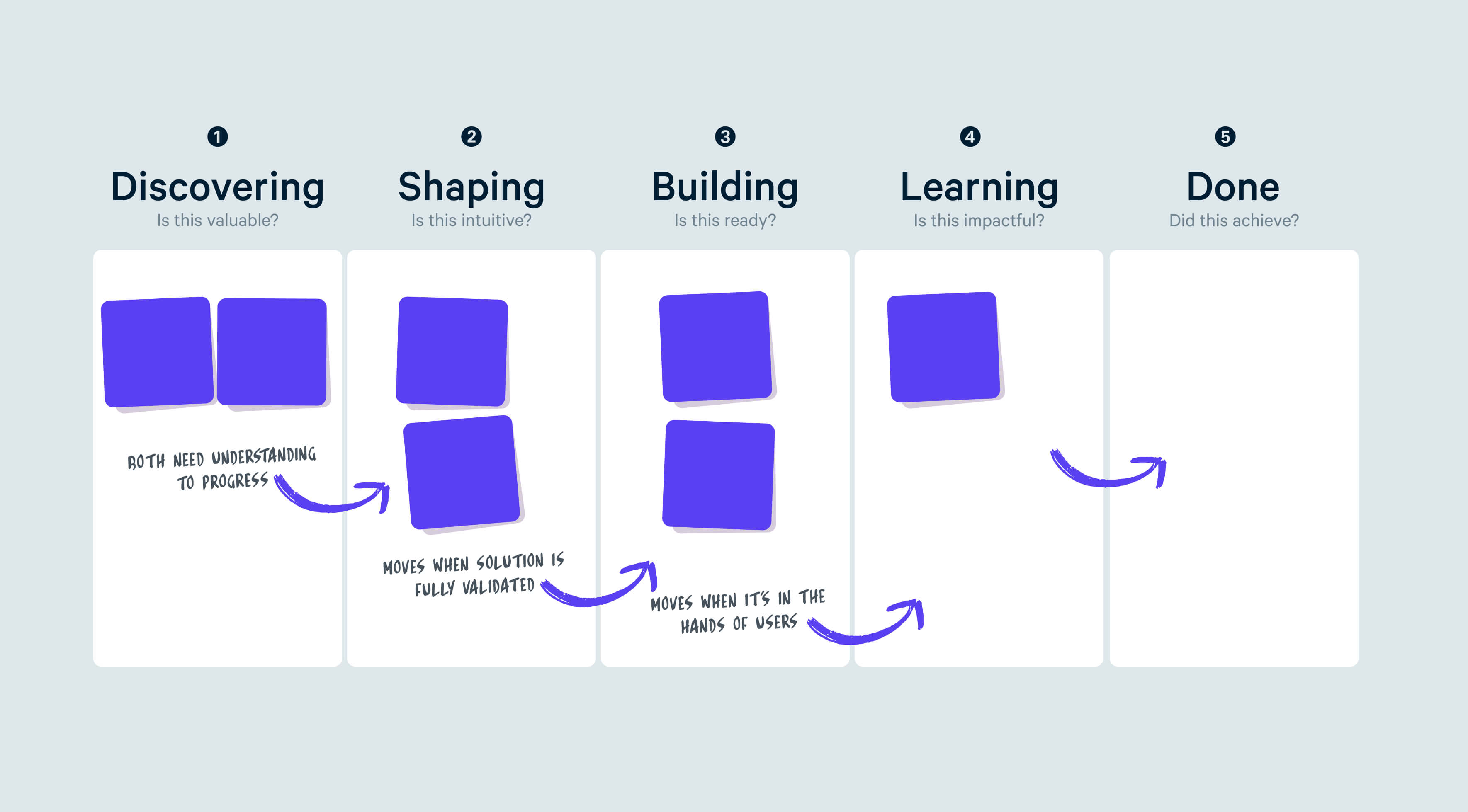


Creating a place for designers to thrive
As I grew the design team, I needed to scaffold the structure for designers to thrive and grow at Qwilr. Both the basic (tooling, templates and systems), and the meaningful (career growth, develop the voice of Design at the company, and more inclusive creative practices). Each new hire came in with fresh eyes, and shined a light on what we could do to improve. Refining my skills as a leader, and my ability to empower the team to thrive.
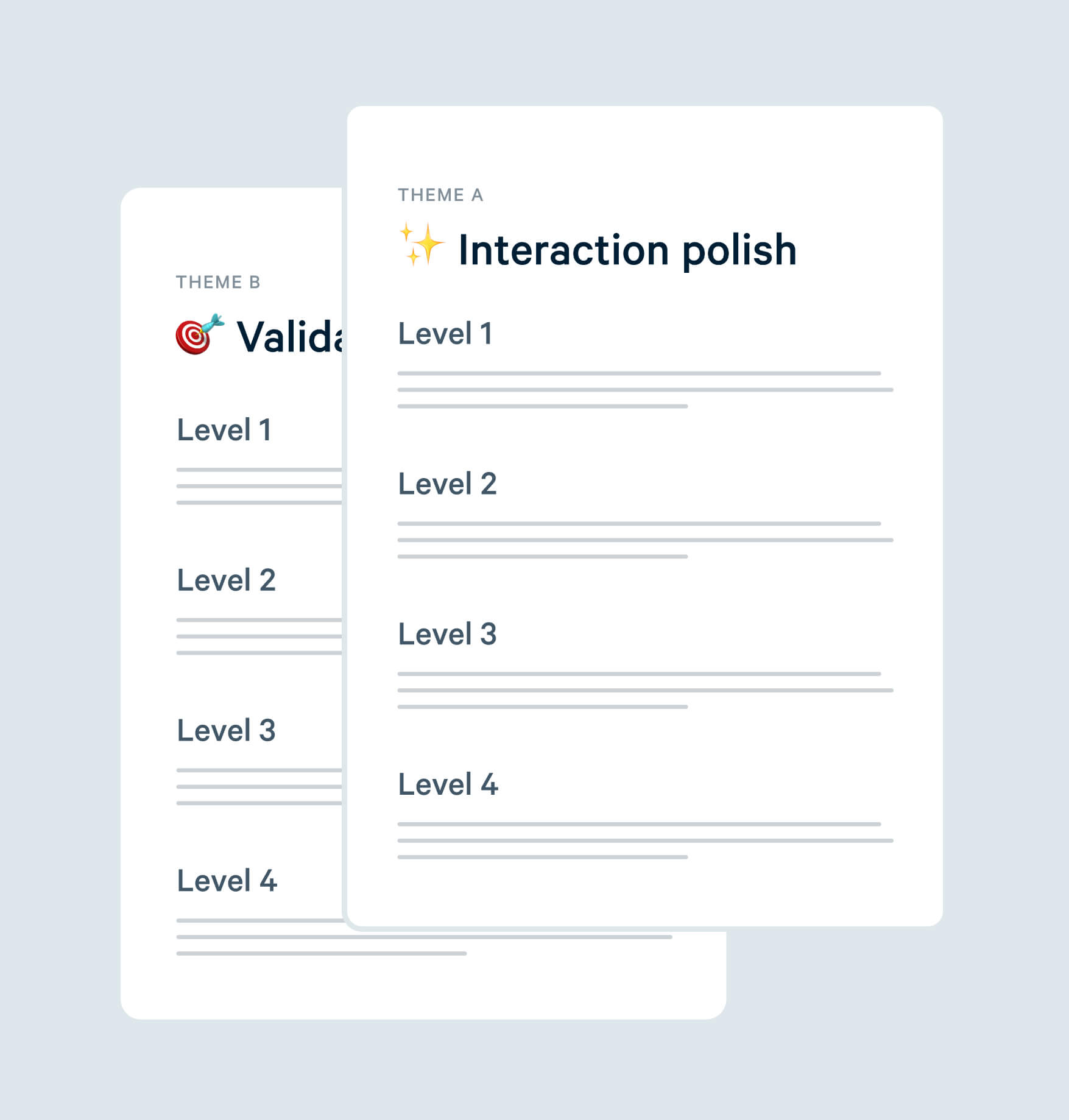


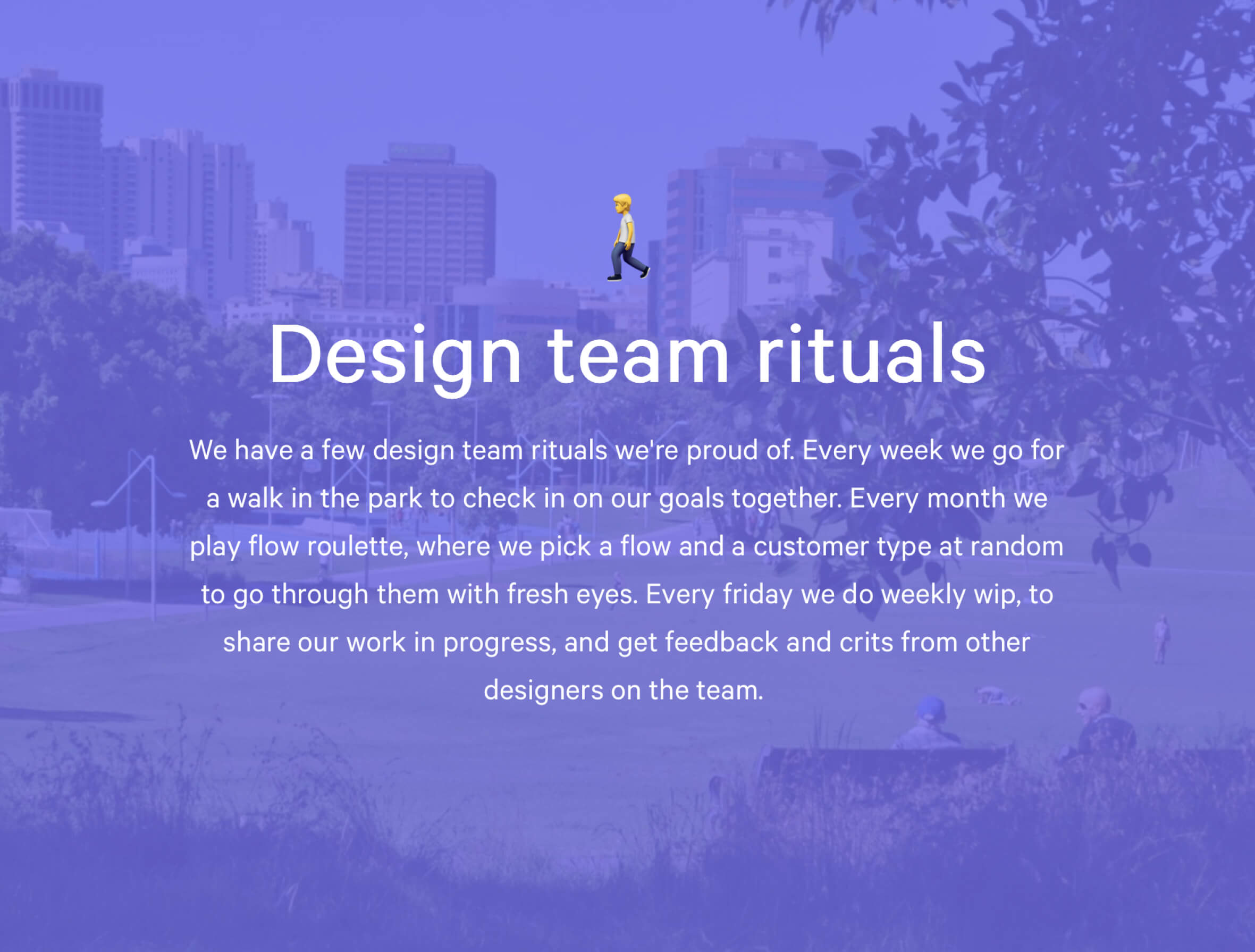
Creating a culture of excellence

Me
Created and lead foundational product team practices and rituals to improve outcome quality.

Annie
Helped establish early dogfooding practices and workshops, and designed launch posters.

Hamish
Helped drive more advanced demo and prototyping practices in design, and surfacing it to broader teams.

Teams
Past and present, key collaborators in making the rituals more inclusive, valuable and fun for teams.
In a scaling startup, there’s always daylight between a team’s ambitions for quality and what it can deliver. Now guiding all the product teams, my role became concerned with minimising that gap, by having excellence as a shared concern across teams. To get teams closer to customers, and feel first hand how to deliver them better experiences.
Starting together
Throughout my career, the most impactful and enjoyable projects have had close knit teams that started on the problem together. Run more like a search party for the best idea, with a diffusion of responsibilities, than a 3 legged race, everyone in lurching forward in lockstep. I established this practice at Qwilr, leading off-sites, retreat workshops, and remote first project kickoff practices to empower teams to forge stronger collaborative bonds, and deliver their best work.

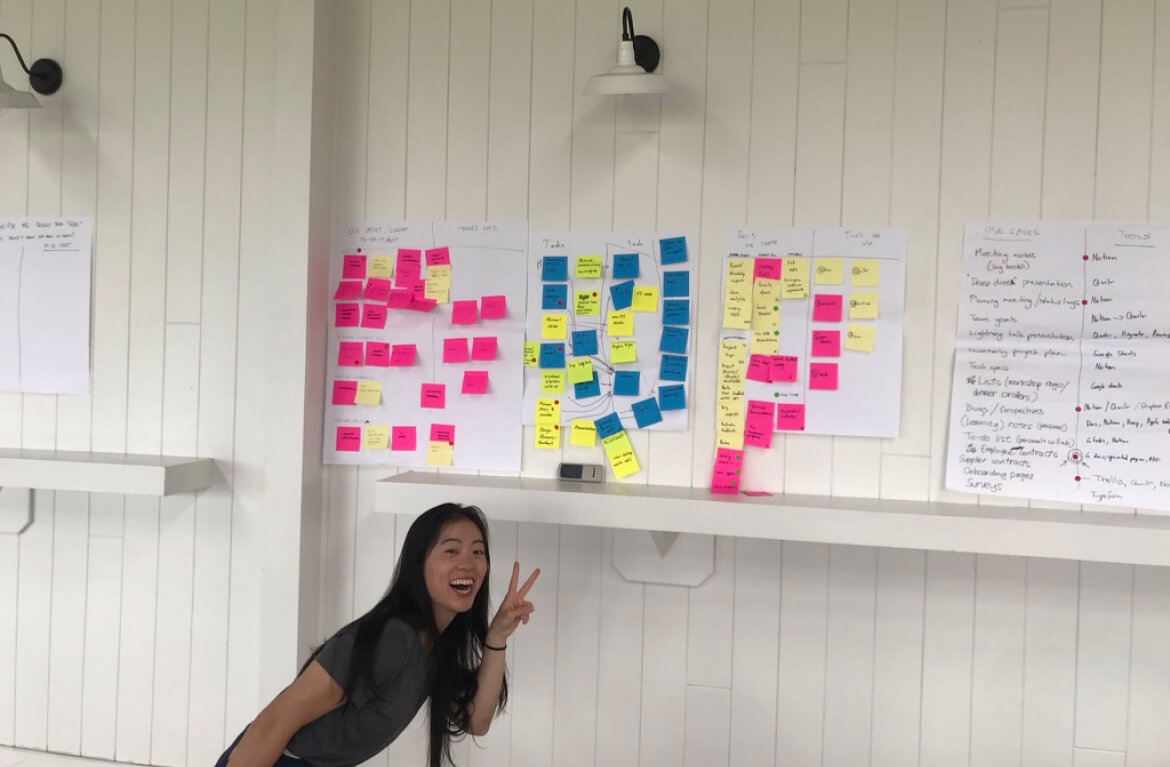

Establishing demos and dogfooding rituals
Demos and dogfooding rituals allow teams to get other perspectives on their work, visibility on what others are creating, and to celebrate progress together. To find ways to actually use the tool as our customers do, feel it’s shortcomings first hand, and spur ideas from everyone on ways to improve it. I’ve loved refined these practices over the years — from kickoffs, weekly showcases to final experience reviews — to make it easy and valuable to bring in perspectives from across the company. Helping minimising blindspots and biases in the work, and creating much better experiences for customers.
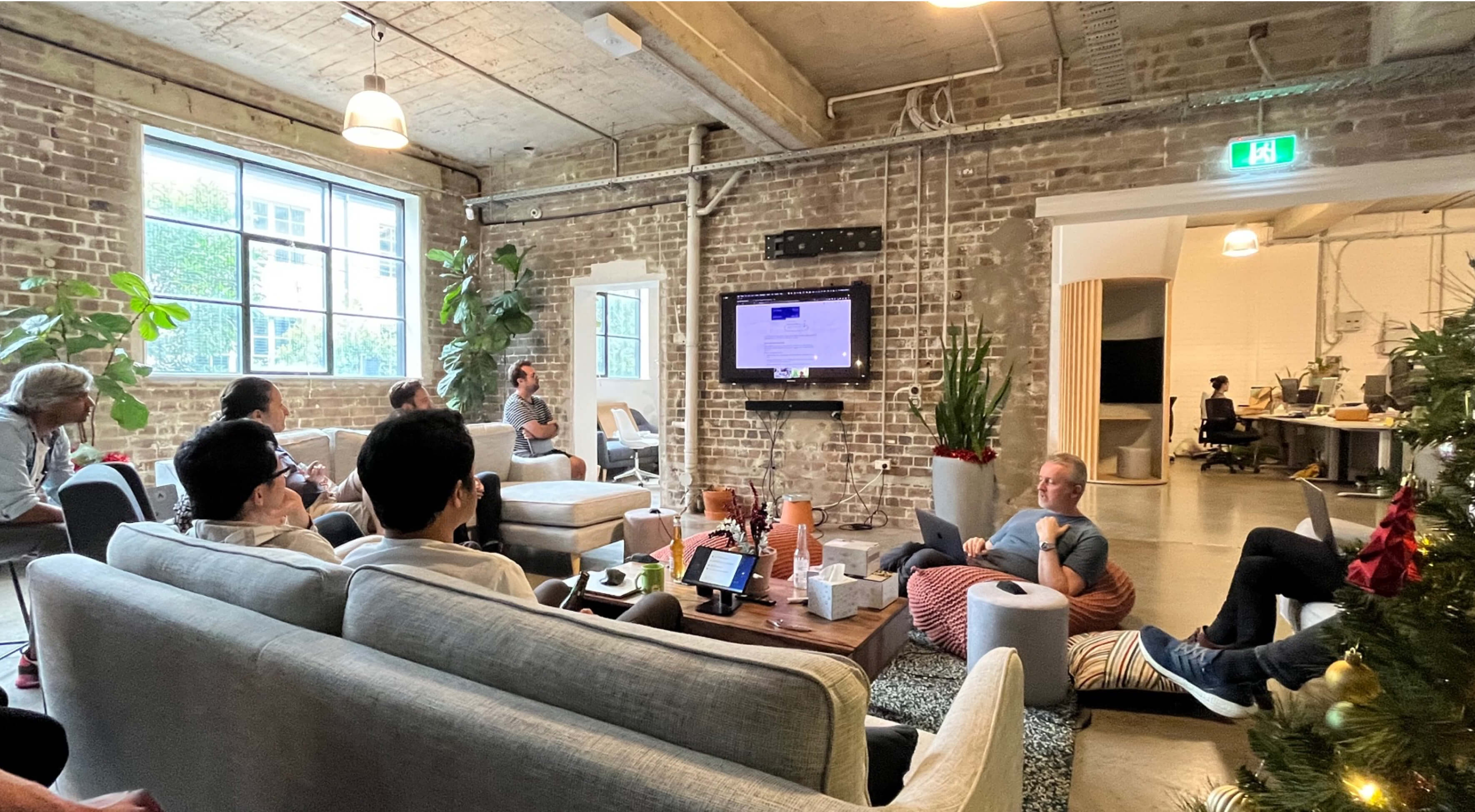
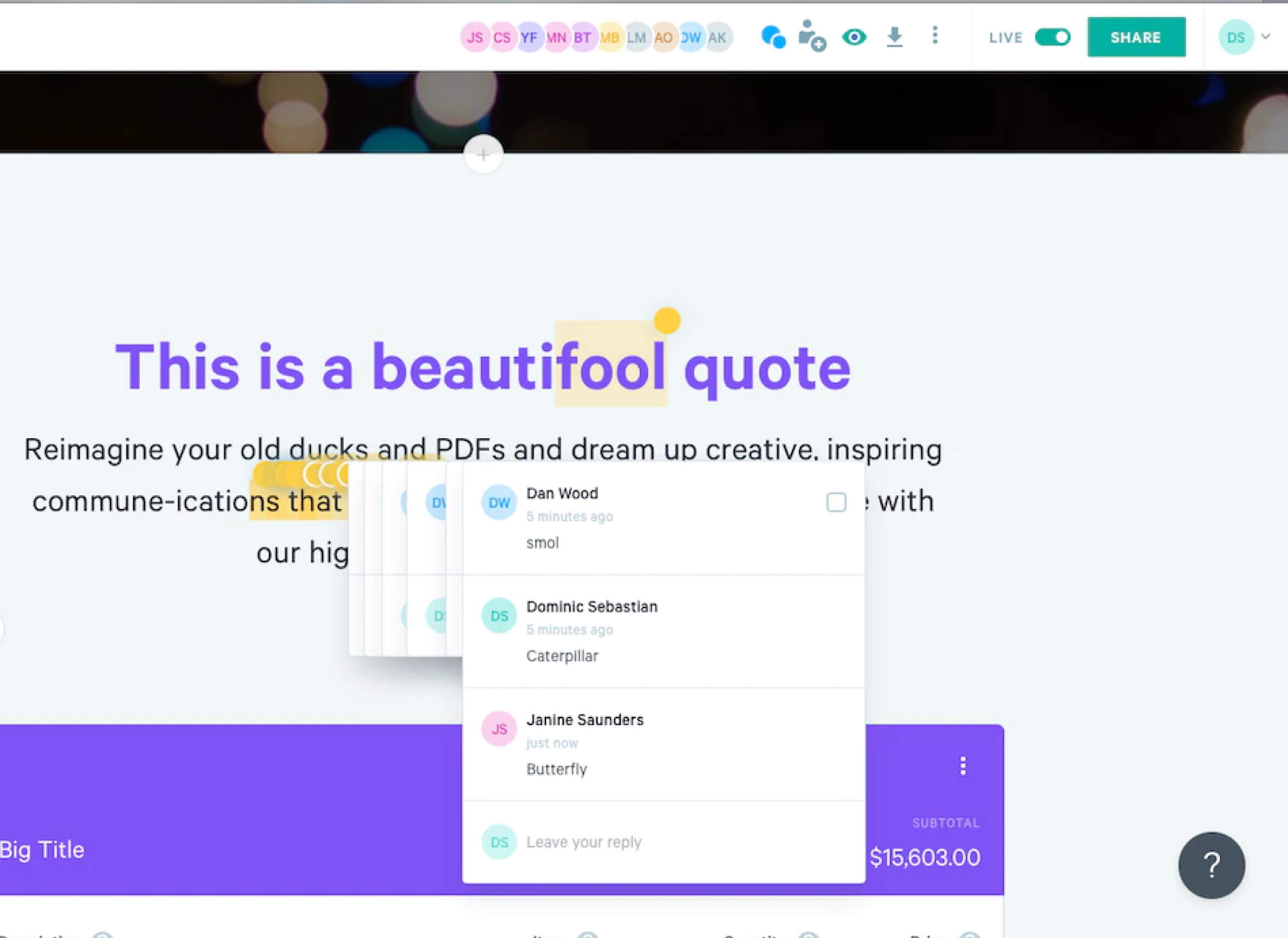

Celebrating launches
Startups can feel like a never-ending treadmill, and without time to take a beat it’s hard to recognise the progress that’s been made. To mark launches in a more tangible way, I created posters with feature teams. Combining project names with pop culture music and film posters, members would get to sign the ones we had in the office, and send postcards for remote, but vital, teammates that made the launch possible.



Shaping a living, evolving strategy

Me
Design Leader, responsible for developing concepts, and getting buy in for transformation projects.

Dylan
Product Leader, key partner in prototyping concepts, and articulating overall product strategy

Leo
Principle Product Manager, helped refine strategy and socialise it with the broader company.
Now a VP, my “first team” was leadership, and my role was to explore, communicate and negotiate what I believed the longer view of the product should be. A practice I found immensely challenging and rewarding. Over time I found my rhythm with it. To create artefacts that inspired teams, increased clarity, and created options for the future, without derailing focus on the near term goals.
Prototyping our vision
Dylan, Qwilr’s CEO & cofounder, was gifted with words, and skilled in publishing internal narratives to guide and inspire the company. As the company and our product ambitions had grown, we needed faster and more tangible ways to explore and communicate the vision of the product. I partnered with him to turn our abstract ideas into concrete, interactive prototypes. Making the vision of Qwilr something teams could play with, internalise and rally around.
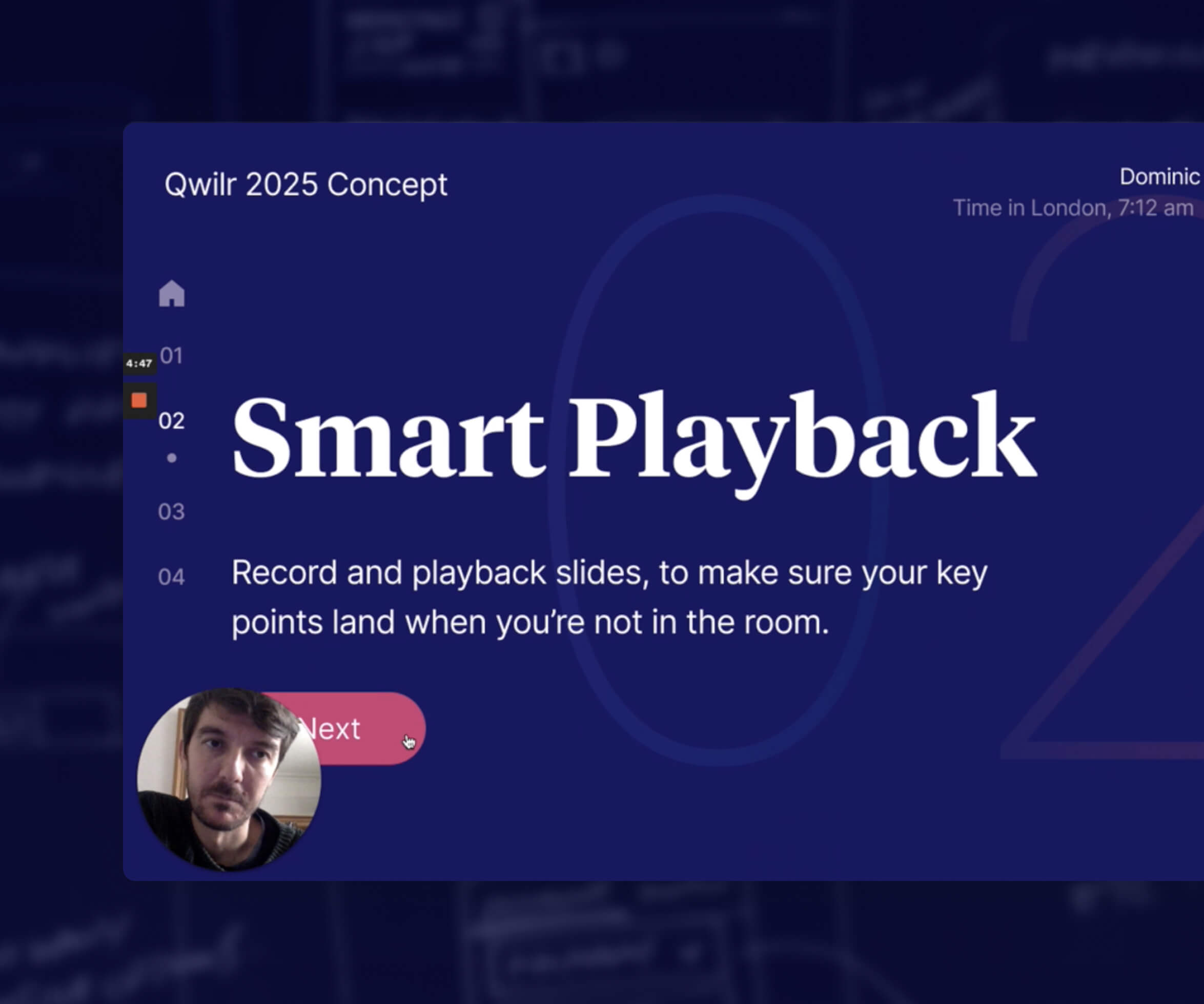


Transformation projects
Large surface areas of the product were bound by old tech decisions, complicated experience debt, and created for an older idea of who our ICP was. My role was to lead these large scale transformation projects. To paint a picture of the summit we were trying to reach, create the direction, space and structure for the teams to get there, and contribute early core concepts. Taking it from an early exploration to a key priority on our roadmap.



